George Gounezos, athinorama.gr
Dragons, skulls and knights, Gothic tales and pop stories, popular figures as well as new images of the ephemeral urban canvas of street art are filling the exhibition space of the "House of Letters and Arts" of the Onassis cultural centre. Journalist Joanna Goumouza walked around and examined live the preparation of the "No respect" exhibition along with curator Marilena Kara, who is talking about graffiti art amidst sprays, paints and templates.
"With the "No respect" exhibition we wanted to show the street art, graffiti and a very young audience that loves them but also to refute the opinion of some that this is vandalism. The main goals were to do something similar to what we are seeing today on the walls of buildings in the cities, to examine this phenomenon in historical perspective and especially to present the very talented artists.
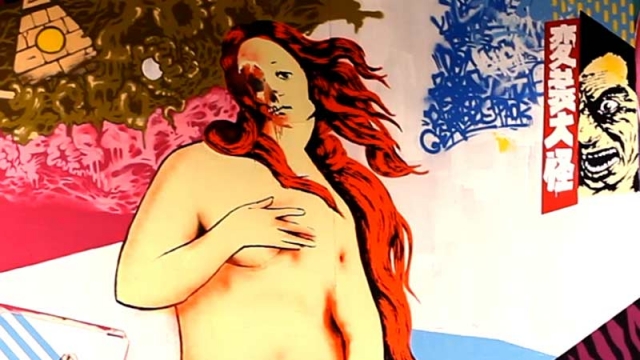
As I had no idea of the number of these young people, I did not know what to expect.
Ultimately, however, we received 165 proposals. They were too hesitant at first. The fact that an institution had decided to make an in-house exhibition of something that happens on the street, and that is maybe illegal, to some extent shocked them.
One of the key words and concepts here is "respect", the respect for one of the members of this community shown on the part of its other members. During the preparation, I saw their hesitation lest they would lose the respect of their community, as they would enter into a closed institutional space. When I had to think of a title for the exhibition, that word was the first thing that occurred to me. Ultimately, however, through a game of concepts, I came to "No respect". The reasons were many, as society does not seem to respect the works of these artists because they are accused of not respecting public space but also because those involved in the exhibition are taking the risk of losing the respect of those who are not involved in it.
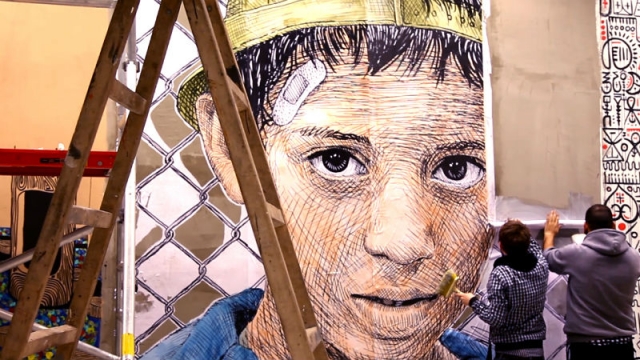
Museums abroad have presented this history for years whereas in Athens, street artists display their works at alternative places.
Nevertheless, I asked them to come over and draw following the street logic because I steadfastly believe that much of this mode of expression is an art and it will certainly have its place in the history of 20th-century art. It is no coincidence that some "milestones" in 20th-century art created graffiti, for example, Jean-Michel Basquiat and Keith Haring. The fact that they are presented at museums shows that their incredible visual art is winning recognition.
I wanted this exhibition to be a common graffiti. I was dreaming of a psychedelia, of being lost between the sketch, colour and tension. We tried to change the space into a street: the surfaces on which the artists created their works are covered with cement, which creates a sense of outer walls and the artists themselves were allowed to do whatever they wanted on the floor and had the opportunity to draw on cars.
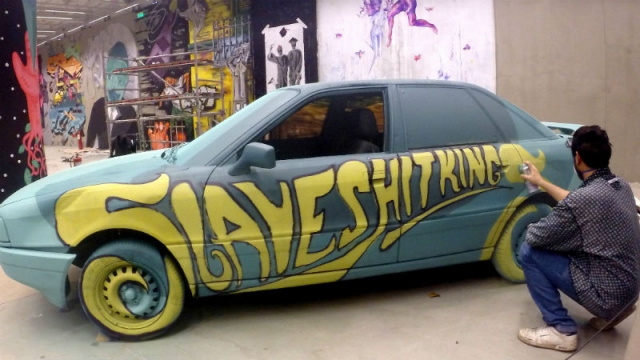
The participants range from 19 years old (SΤMTS) to 40 years old. The "patriarch" of this art form, JASONE, is one of the old masters presented here as well as BILLY GEE and THEOPSY, who makes digital graffiti. In addition, the exhibition presents artists whose presence in Athens is particularly noticeable such as CACAO ROCKS, YAKOO with his deer, SHK CREW with the game of chess on a car, EXIT with his stable figures, WD, who is incredibly skilful in intertwining his works with the place, where he creates them. We will however see works from all over Greece, including by SHUEN from Larissa, UPSET and NAR from Thessaloniki, LINARDAKI-PASISOT of Crete.
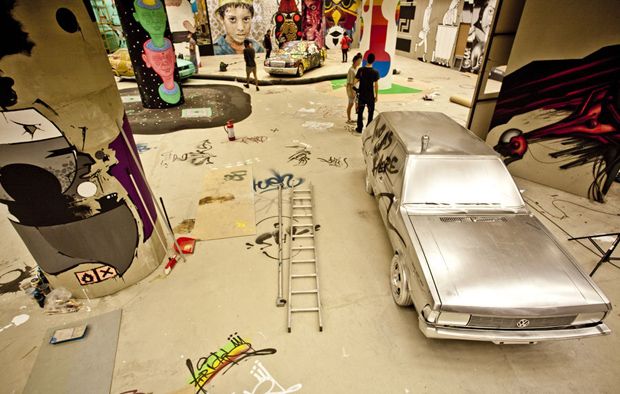
In general, the works have a more visual effect but there are also those which contain some comment on society. For example, "fame" (hearing) by NAR, at the entrance, is one of his most critical graffiti. I consider it as even sharper because it also refers to "fame" (in Greek this is a form of the verb "eat"), at a time when the forms "eat", "ate", "we have nothing to eat" are playing a special role.
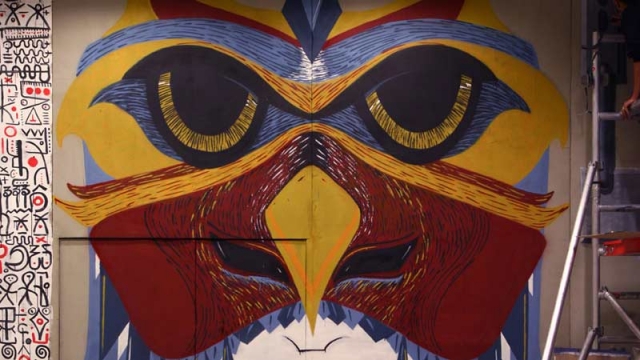
I think the fact that Athens is one of the most painted cities relates to the fact that the citizen does not respect a city that obviously does not respect him or her. As for the "sequel", we are preparing for 6 June a symposium with participants mainly from abroad (architects, writers, sociologists and theorists), who will talk about graffiti in the past and present, whether they still meet the same needs over the years or if they have ultimately turned into something decorative, whether they are still so "rough" or not."